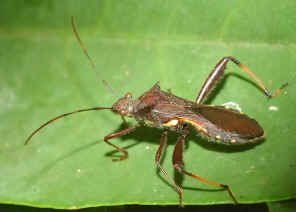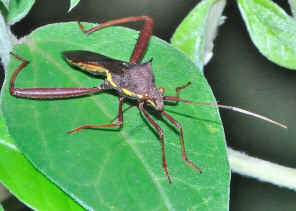Pod-Sucking Bug - Riptortus serripes
Family Alydidae
This page contains pictures and information about Pod-Sucking Bugs that we found in the Brisbane area, Queensland, Australia. The bug also known as Brown Bean Bug.
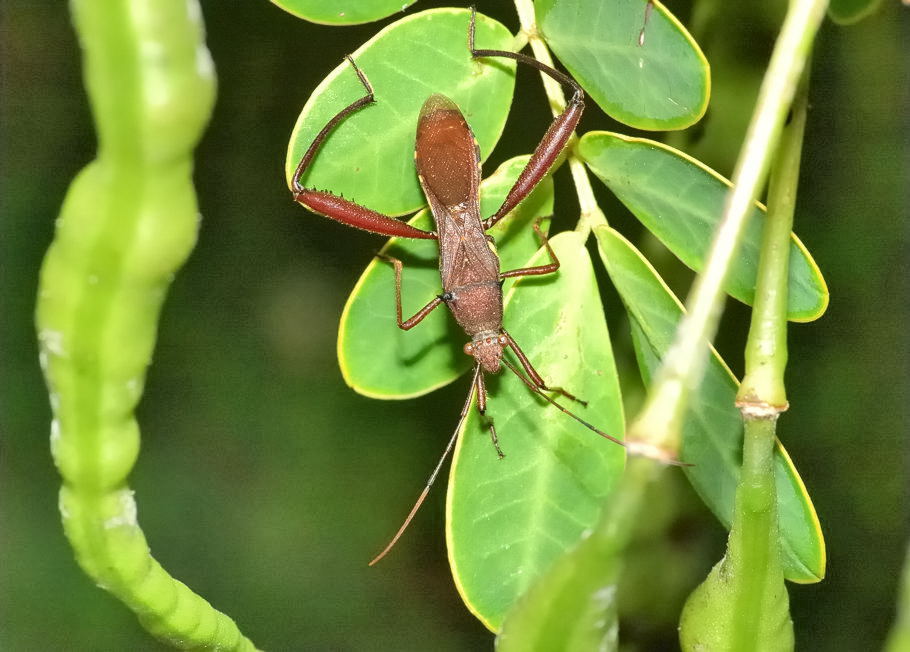
- Body length 20mm, bug on host plant Easter Cassia (Senna pendula, weeds).
- This Pod-Sucking Bug is brown in colour with yellow lines along each side of the body. Its body is slim and narrower in the middle, with short sharp spine on each side of the thorax. It also has strong spiny hind legs.
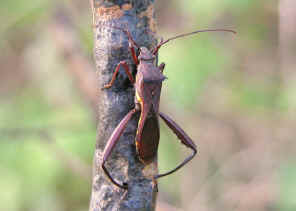
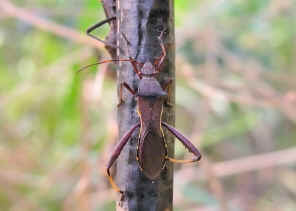
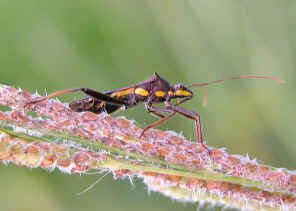
- Male female
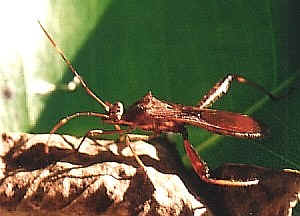
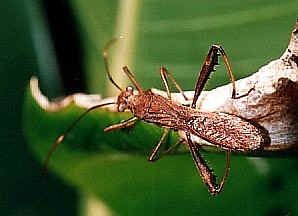
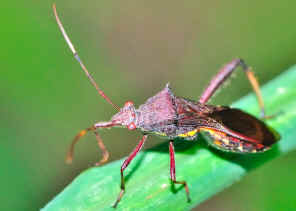
- Pod-Sucking Bug is common in Brisbane bushes wherever there are the plants with seedpods. They are known to feed on Acacia seedpods and beans.
-
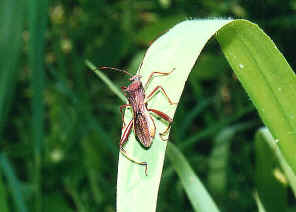
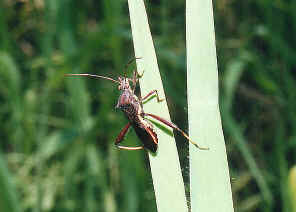
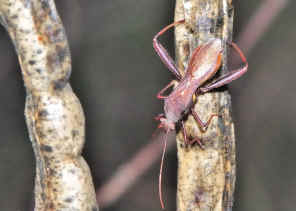
-
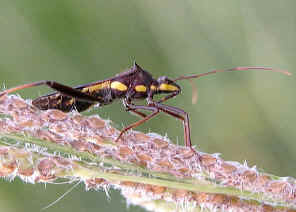
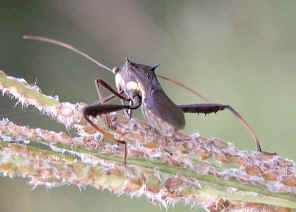
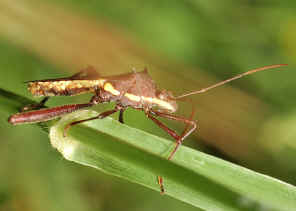
- They are also common on grasses. It seems that they lay eggs on grasses, but not exactly sure. Adults feed on grass seeds as well.
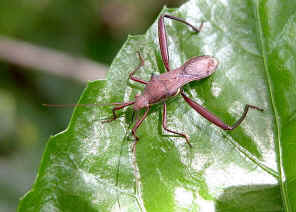
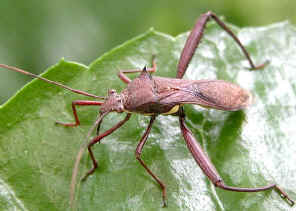
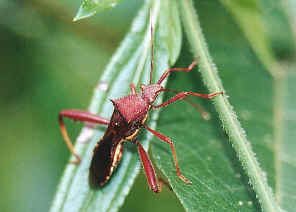
- The bug is an active flyer. Adults can be found on other plant leaves.
- When disturbed, the bug will eject some yellow smelly liquid as defence.
Eggs
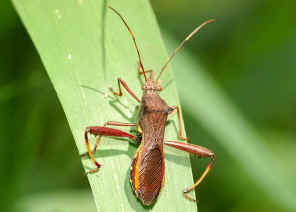
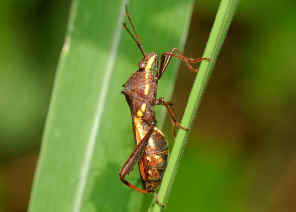
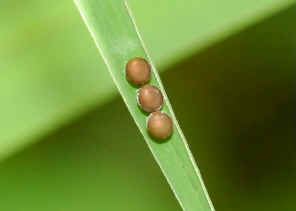
- We found a Pod-Sucking Bug on tall grasses with some bug eggs next to it. Photos were taken on Nov 2007. Those eggs were brown in colours, round and flat with diameter about 1.5mm.
Nymphs
- On early summer October 2005, we the adult Pod-Sucking Bugs and different stages of instars on the Easter Cassia (Senna pendula) cylindrical seedpods. In most of the other times, we only saw the Pod-Sucking Bug adults, seldom saw the nymphs.
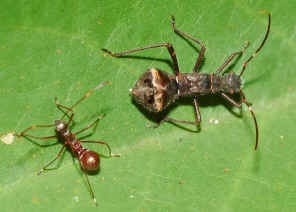
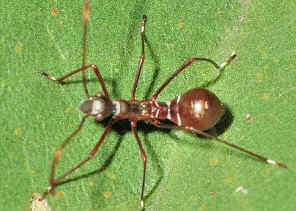
- 2nd instars and 4th instars
- Like other Alydine their nymphs are ant-like. Instars 1-3 bear a very close resemblance to the black ants of genus Polyrhachis.
-
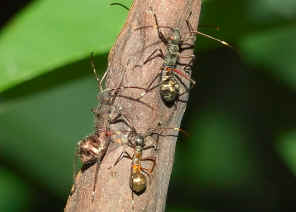

- 3rd instars and two 4th instars
- Different stages of instars can be found resting and feeding on host plants.
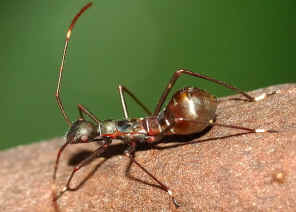
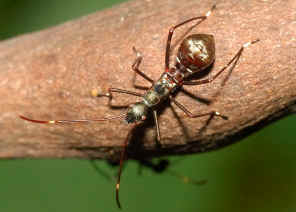
- 4th instars, body length 10mm
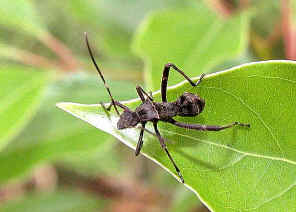
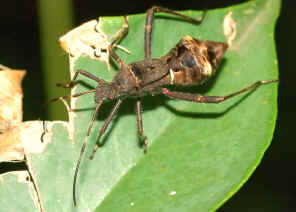
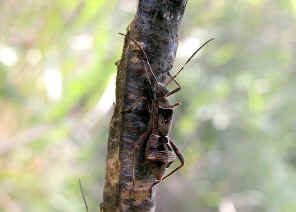
- 5th instars, body length 15mm
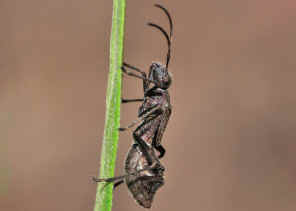
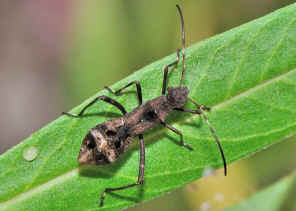
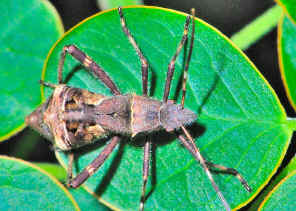
-
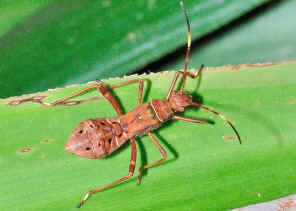

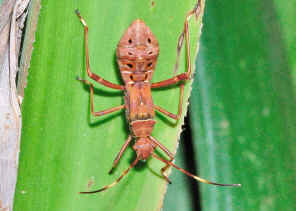
- The last instars are about the same size as the adult. Their body colours mimic the seedpod, with brown and dark brown patterns. Pictures of instars were taken on early summer.
Ants Mimicking - Hiding from predator
- The young Pod-Sucking Bug nymph mimics black ants.
-
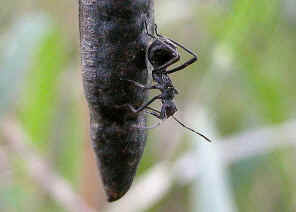
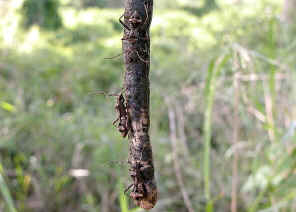
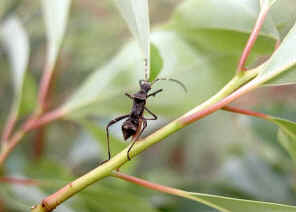
- Ants are the most abundant group of insects and have powerful defense mechanisms such as acid taste, aggressive biting, painful sting, and group defense. Ants are generally not subject to predation. The young instars mimic ants to gain some degree of protection.
Host Plants
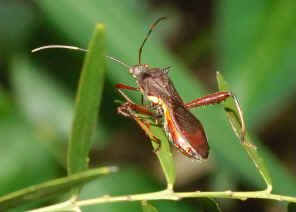
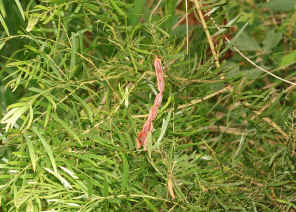
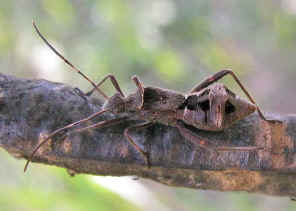
- The Pod-Sucking Bugs can be found on Acacia. We occasionally saw those Pod-Sucking Bugs resting on Acacia seed pods.
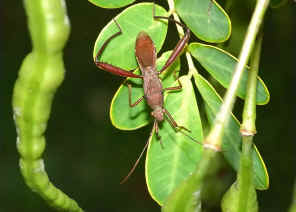

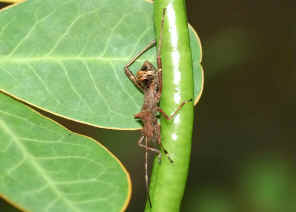
- However, those bugs also feed on most other plants with seed pods, including beans and cassia, plants in the family Fabaceae. The bugs may damage those seedpods very badly.
- Reference:
- 1. Insects
of Australia, CSIRO, Division of Entomology, Melbourne University
Press, 2nd Edition 1991, pp 504.
- 2. Riptortus serripes (Fabricius) - Australian Insect Common Names, AICN, CSIRO, 2004.
- 3. Senna pendula - Weeds of the Shoalhaven - Shoalhaven City Council, 2003.
- 4. Studies on the biology, immature stages, and relative growth of some Australian bugs of the superfamily Coreoidea (Hemiptera: Heteroptera) - Kumar, R. 1966, Australian Journal of Zoology 14: 895-991 [908].
- 5. Species Riptortus serripes (Fabricius, 1775) - Australian Faunal Directory, Australian Biological Resources Study.
- 2. Riptortus serripes (Fabricius) - Australian Insect Common Names, AICN, CSIRO, 2004.
